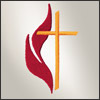
As a movement with roots going back to the eighteenth century, Methodism is hardly a new phenomenon on the religious and political scenes, but this year Methodists are playing a new role: electoral bellwether. With the tightening of statewide races throughout the South, the West, and the Midwest, all places where Methodists are present in significant numbers, analysts are looking to Methodists for hints as to how religious voters might act on Election Day.
Sometimes unnoticed in the rush to pigeonhole the broader Evangelical demographic, Methodists have played an influential role in elections for decades. Methodist congregations in the South and West are large, while those in the Midwest tend to be smaller. However, in the delegate rich states like Ohio and tossup states like Minnesota and Michigan Methodists are poised to tip the scales in either direction in part because Methodists are neither predominantly Liberal nor predominantly Conservative. The Pew Forum reports that 42 percent identify as Liberal and 47 percent as Conservative: modern Methodism is a purple phenomenon despite the fact that President George W. Bush is Methodist.
As a decidedly moderate demographic the Methodist vote may determine this election’s outcome in many states, leading some to suggest that as go the inheritors of Wesley’s church, so goes the nation. In preparation for the coming election, the General Board of Church & Society for the United Methodist Church has prepared a voter’s guide as has the California-Pacific Conference of the United Methodist Church.


